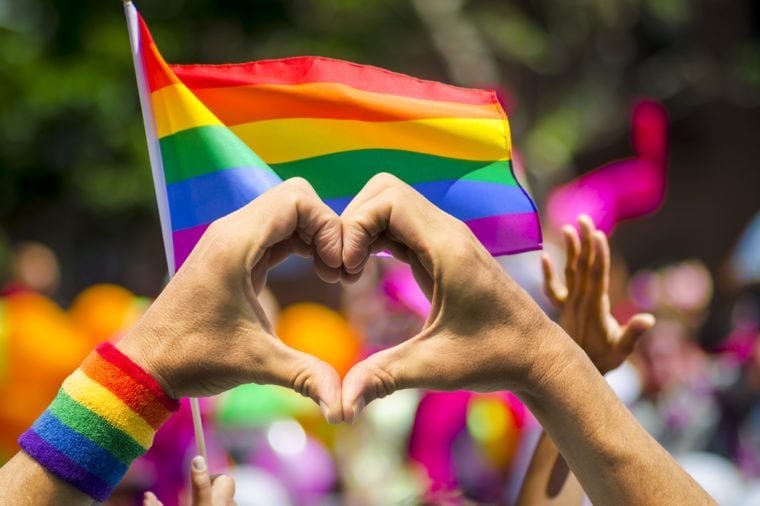 This June, you might notice more rainbow flags around town. June is LGBT pride month in the United States, so it’s likely this multi-colored symbol will be more prevalent than usual. But how did the rainbow come to be associated with LGBT rights in the first place?
This June, you might notice more rainbow flags around town. June is LGBT pride month in the United States, so it’s likely this multi-colored symbol will be more prevalent than usual. But how did the rainbow come to be associated with LGBT rights in the first place?
Legend says that it all started with a single parade. In 1978, Harvey Milk, a San Francisco city supervisor and the first openly gay politician elected to office in California, asked his friend Gilbert Baker to create a symbol for the LGBT community. Milk wanted to reveal the new design at the Gay Freedom Pride Parade in San Francisco that year.
Baker, a gay rights activist, army veteran, and artist, immediately got to work designing a striped flag with eight colors. According to Baker’s website, each color on the flag had a special meaning: Pink represented sex, red for life, orange for healing, yellow for sunlight, green for nature, turquoise for magic, blue for serenity, and violet represented spirit. Thirty volunteers hand-dyed and stitched the original two flags.
That said, no one knows exactly why Baker chose to make the symbol a rainbow. Some say he was paying tribute to Judy Garland, one of the first gay icons, who famously sang “Somewhere Over the Rainbow” in the movie The Wizard of Oz. Others believe that Baker was inspired by a multi-colored flag used on college campuses in the 1960s to symbolize world peace and unity.
Regardless of their original inspiration, the rainbow flags were a huge success when Baker unveiled them at the 1978 San Francisco Pride Parade. “We stood there and watched and saw the flags, and their faces lit up,” Cleve Jones, an LGBT rights activist who attended the parade, told the New York Times. “It needed no explanation. People knew immediately that it was our flag.”
The symbol’s popularity soared after Milk’s assassination just a few months later. Many saw the rainbow flag as “a beautiful, uplifting image that filled a need for a recognizable symbol for the LGBT community,” said Peter Tatchell, a veteran LGBT equality and human rights campaigner since the 1960s.
“I like to think [the rainbow flag] spread because for the first time gays were being told to be proud,” said Nico Ramsey, a social activist in Austin, Texas. “When I look at the flag, I see various elements of me. I have never viewed myself to be simple. I recognize that I am complex, and that is what makes me unique and beautiful.”
As demand for the flag increased, its original eight colors were narrowed down to six: red, orange, yellow, green, blue, and purple. Fewer colors kept production costs low and made the flags easier to display.
Today, “the rainbow flag has become one of the most ubiquitous and universally recognized flags in the world,” Tatchell said. “Unlike other flags, it transcends national borders and unites people of different cultures. It symbolizes the global LGBT family and our worldwide freedom struggle.”
But displaying the flag isn’t the only way members of the LGBT community and their allies celebrate unity and pride. These days, you can find the rainbow symbol on everything from t-shirts to mugs to towels to bed sheets, according to Tatchell. Learn more fascinating meanings behind the colors of everyday objects.
The post How the Rainbow Became Associated with Gay Rights appeared first on Reader's Digest.
from Reader's Digest https://ift.tt/2Lk4COb
ليست هناك تعليقات:
إرسال تعليق